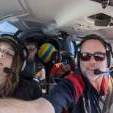To Lean or not? Above 75% HP
-
Members Online
- atpdave
- jetdriven
- 201Mooniac
- LANCECASPER
- Utah20Gflyer
- Fly Boomer
- NickG
- ta2too
- N201MKTurbo
- pirate
- Mark Staggs
- Rmnpilot
- Tom F
- Paul Thomas
- thumbsucker.
- eman1200
- BlueSky247
- Skates97
- amillet
- 1980Mooney
- Echo
- Niko182.
- Thedude
- DXB
- IvanP
- SkepticalJohn
- ohdub
- takair
- Larry
- Dwb62
- McMooney
- Tmooney
- Scott Ashton
- 201er
- richardbrochu27
- Rizvon
- mgtrevor
- FlyingDude
- EricJ
- AndreiC
- Ron McBride
- Dream to fly
- joepilotmooney
- redbaron1982
- alextstone
- dzeleski
- highflyer77
- neilpilot
- MikeOH
- Brian2034


Recommended Posts
Join the conversation
You can post now and register later. If you have an account, sign in now to post with your account.